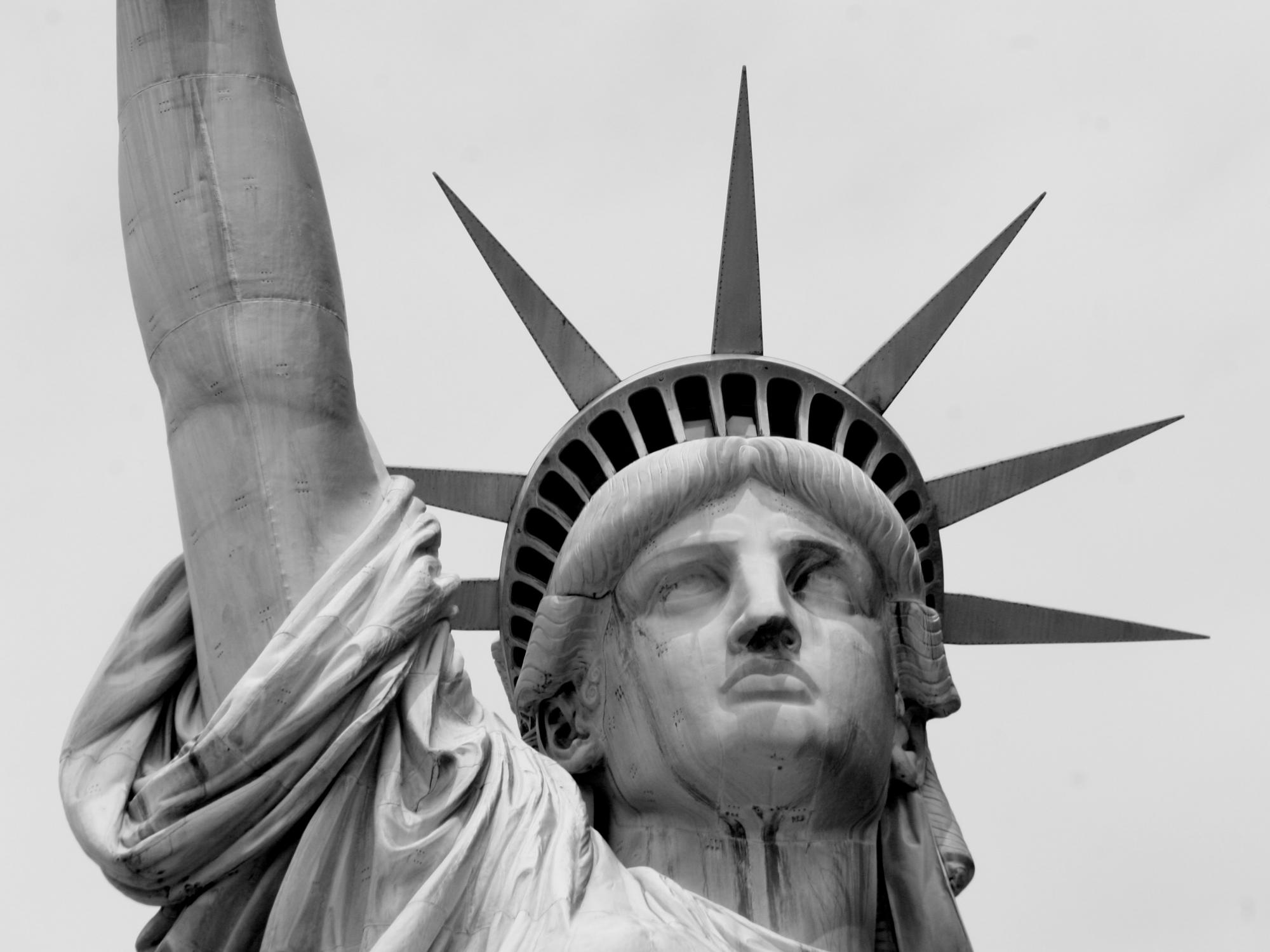
Despite the wide diversity when it comes to where refugees come from and who they are, there is little equality in how they are treated. Refugees from some countries are pitied and welcomed with open arms, while others are treated with disdain, fear or indifference, with only a select few being "allowed in." Migrants and immigrants often face similar inequality and exclusion, whether by government policies or the culture and media of their adopted land. Current events in Europe have, once again, brought conversations about refugees to the forefront. History, politics, and personal experiences are just some of the topics this month's display can speak to.
A physical book display is now available at the Libraries with the selection rotating weekly. Some of the eBooks listed below also have a physical listing. Please check the availability.
Special thanks to our Materials Processing Coordinator, Leah Zande, for compiling this list. Feature image by Fabian Fauth on Unsplash.
Sound of the Border: Music and Identity of Korean Minority in China
Koo, Sunhee (2021)
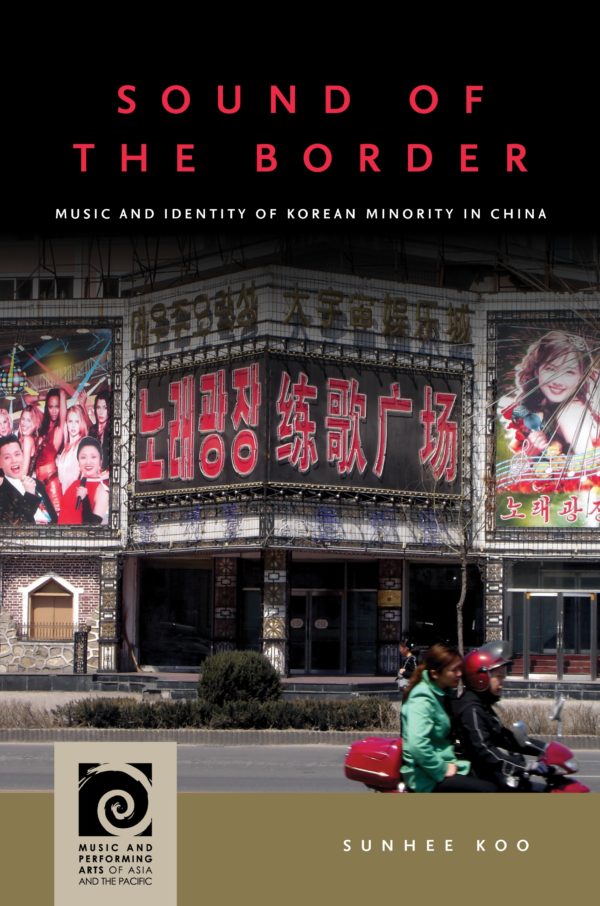 Using ethnographic data collected in China and South Korea between 2004 and 2011, author Sunhee Koo provides a comprehensive view of the music of Koreans in China (Chaoxianzu), from its time as manifestation of a displaced culture to its return home after more than a century of amalgamation and change in China. As the first English-language book on the music and identity of China’s Korean minority community, "Sound of the Border" investigates diasporic mutations of Korean culture, influenced by power dynamics in the host country and the constant renewal of relationships with the homeland. Between the 1860s and the 1940s, about two million Koreans migrated to China in search of economic opportunity and political stability. Settling primarily in the northeastern part of China bordering the Russian Far East, these Koreans had flexibility in crossing geopolitical and cultural boundaries throughout the first half of the twentieth century. In 1949, the majority of Koreans in China accepted their new citizenship designation as one of the PRC’s fifty-five official national minorities. The subsequent partition of the Korean peninsula in 1953 further politicized their ethnic identity, and for the next forty years they were only authorized to interact with North Korea. It was only in the early 1990s that Chaoxianzu were able to renew their relationship with South Korea, although they now faced new challenges due to an ethno-national prejudice as it focused on the nation’s industrial advancement as the most prominent measure of its social superiority.
Using ethnographic data collected in China and South Korea between 2004 and 2011, author Sunhee Koo provides a comprehensive view of the music of Koreans in China (Chaoxianzu), from its time as manifestation of a displaced culture to its return home after more than a century of amalgamation and change in China. As the first English-language book on the music and identity of China’s Korean minority community, "Sound of the Border" investigates diasporic mutations of Korean culture, influenced by power dynamics in the host country and the constant renewal of relationships with the homeland. Between the 1860s and the 1940s, about two million Koreans migrated to China in search of economic opportunity and political stability. Settling primarily in the northeastern part of China bordering the Russian Far East, these Koreans had flexibility in crossing geopolitical and cultural boundaries throughout the first half of the twentieth century. In 1949, the majority of Koreans in China accepted their new citizenship designation as one of the PRC’s fifty-five official national minorities. The subsequent partition of the Korean peninsula in 1953 further politicized their ethnic identity, and for the next forty years they were only authorized to interact with North Korea. It was only in the early 1990s that Chaoxianzu were able to renew their relationship with South Korea, although they now faced new challenges due to an ethno-national prejudice as it focused on the nation’s industrial advancement as the most prominent measure of its social superiority.
Sunhee Koo examines the unique construction of diasporic Korean music in China and uses it as a window to understanding the complexities and diversification of Korean identity, shaped by the ideological and political bifurcation and post–Cold War political resurgence that have affected Northeast Asia. The performances of Korean Chinese musicians—positioned between their adopted state and the two Koreas—embody a complex cultural intersection crisscrossing ideological, political, and social boundaries in historical and present-day Northeast Asia. Migrants enact their agency in creating a unique sound for Korean Chinese identity through navigating cultural resources accessed in their host and the two distinctive motherlands. - Publisher's Description
Request this Title
Inclusion: How Hawai‘i Protected Japanese Americans from Mass Internment, Transformed Itself, and Changed America
Coffman, Tom (2021)
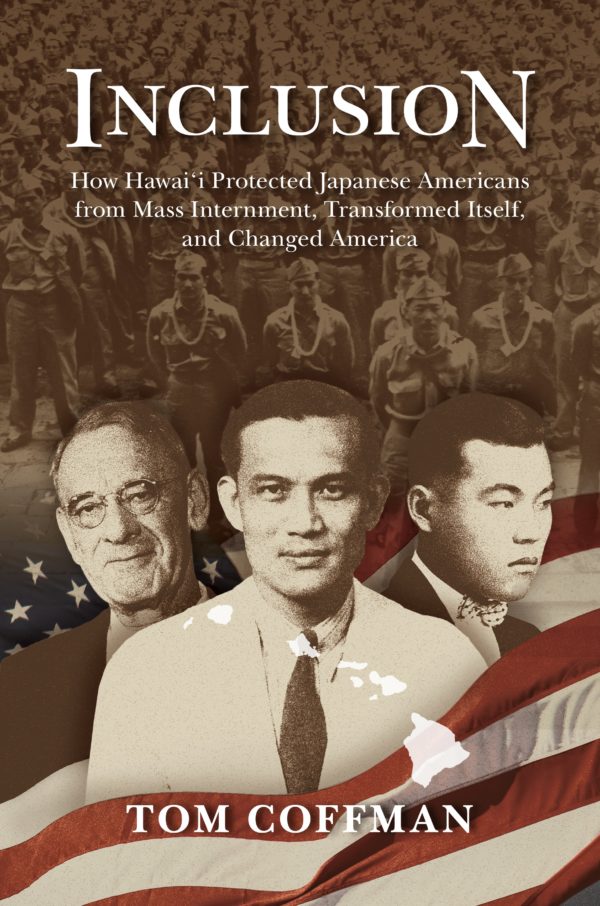 Following December 7, 1941, the United States government interned 120,000 people of Japanese ancestry evicted from scattered settlements throughout the West Coast states, yet why was a much larger number concentrated in the Hawaiian Islands war zone not similarly incarcerated?
Following December 7, 1941, the United States government interned 120,000 people of Japanese ancestry evicted from scattered settlements throughout the West Coast states, yet why was a much larger number concentrated in the Hawaiian Islands war zone not similarly incarcerated?
At the root of the story is an inclusive community that worked from the ground up to protect an embattled segment of its population. While the onset of World War II surprised the American public, war with Japan arrived in Hawai‘i in slow motion. Responding to numerous signs of impending conflict, the Council for Interracial Unity mapped two goals: minimize internment and maximize inclusion in the war effort. The council’s aspirational work was expressed in a widely repeated saying: “How we get along during the war will determine how we get along when the war is over.” The Army Command of Hawai‘i, reassured by firsthand acquaintances, came to believe that “trust breeds trust.”
Where most histories have shielded President Franklin D. Roosevelt from direct responsibility for the U.S. mainland internment, his relentless demands for a mass removal from Hawai‘i—ultimately thwarted—reveal him as author and actor. In making sense of the disparity between Island and mainland, "Inclusion" unravels the deep history of the U.S. “sabotage psychosis,” dissecting why many continental Americans still believe Japan succeeded at Pearl Harbor because of the unseen hand of Japanese saboteurs. Contrary to the explanation of hysteria as the cause of the internment, "Inclusion" documents how a high-level plan of mass removal actually was pitched to Hawai‘i prior to December 7, only to be rejected. - Publisher's Description
Request this Title
Solidarity in the Media and Public Contention over Refugees in Europe
Cinalli, Manlio; Trenz, Hans-Jörg; Brändle, Verena K.; Eisele, Olga; Lahusen, Christian (2021)
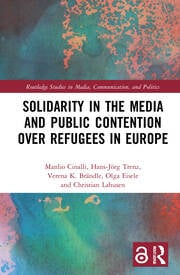 This book examines the ‘European refugee crisis’, offering an in-depth comparative analysis of how public attitudes towards refugees and humanitarian dispositions are shaped by political news coverage.
This book examines the ‘European refugee crisis’, offering an in-depth comparative analysis of how public attitudes towards refugees and humanitarian dispositions are shaped by political news coverage.
An international team of authors address the role of the media in contesting solidarity towards refugees from a variety of disciplinary perspectives. Focusing on the public sphere, the book follows the assumption that solidarity is a social value, political concept and legal principle that is discursively constructed in public contentions. The analysis refers systematically and comparatively to eight European countries, namely, Denmark, France, Germany, Greece, Italy, Poland, Switzerland and the United Kingdom. Treatment of data is also original in the way it deals with variations of public spheres by combining a news media claims-making analysis with a social media reception analysis. In particular, the book highlights the prominent role of the mass media in shaping national and transnational solidarity, while exploring the readiness of the mass media to extend thick conceptions of solidarity to non-members. It proposes a research design for the comparative analysis of online news reception and considers the innovative potential of this method in relation to established public opinion research.
The book is of particular interest for scholars who are interested in the fields of European solidarity, migration and refugees, contentious politics, while providing an approach that talks to scholars of journalism and political communication studies, as well as digital journalism and online news reception. - Publisher's Description
Request this Title
Refugee Routes
Agnew, Vanessa; Konuk, Kader; Newman, Jane O. (2020)
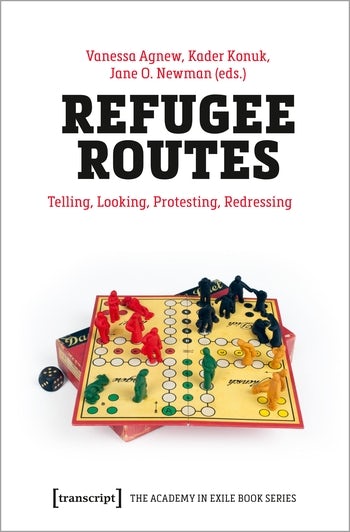 The displaced are often rendered silent and invisible as they journey in search of refuge. Drawing on historical and contemporary examples from Turkey, the Ottoman Empire, Iraq, Syria, UK, Germany, France, the Balkan Peninsula, US, Canada, Australia, and Kenya, the contributions to this volume draw attention to refugees, asylum seekers, exiles, and forced migrants as individual subjects with memories, hopes, needs, rights, and a prospective place in collective memory. The book's wide-ranging theoretical, literary, artistic, and autobiographical contributions appeal to scholarly and lay readers who share concerns about the fate of the displaced in relation to the emplaced in this age of mass mobility. - Publisher's Description
The displaced are often rendered silent and invisible as they journey in search of refuge. Drawing on historical and contemporary examples from Turkey, the Ottoman Empire, Iraq, Syria, UK, Germany, France, the Balkan Peninsula, US, Canada, Australia, and Kenya, the contributions to this volume draw attention to refugees, asylum seekers, exiles, and forced migrants as individual subjects with memories, hopes, needs, rights, and a prospective place in collective memory. The book's wide-ranging theoretical, literary, artistic, and autobiographical contributions appeal to scholarly and lay readers who share concerns about the fate of the displaced in relation to the emplaced in this age of mass mobility. - Publisher's Description
Request this Title
The Wealth of Refugees: How Displaced People Can Build Economies
Betts, Alexander (2021)
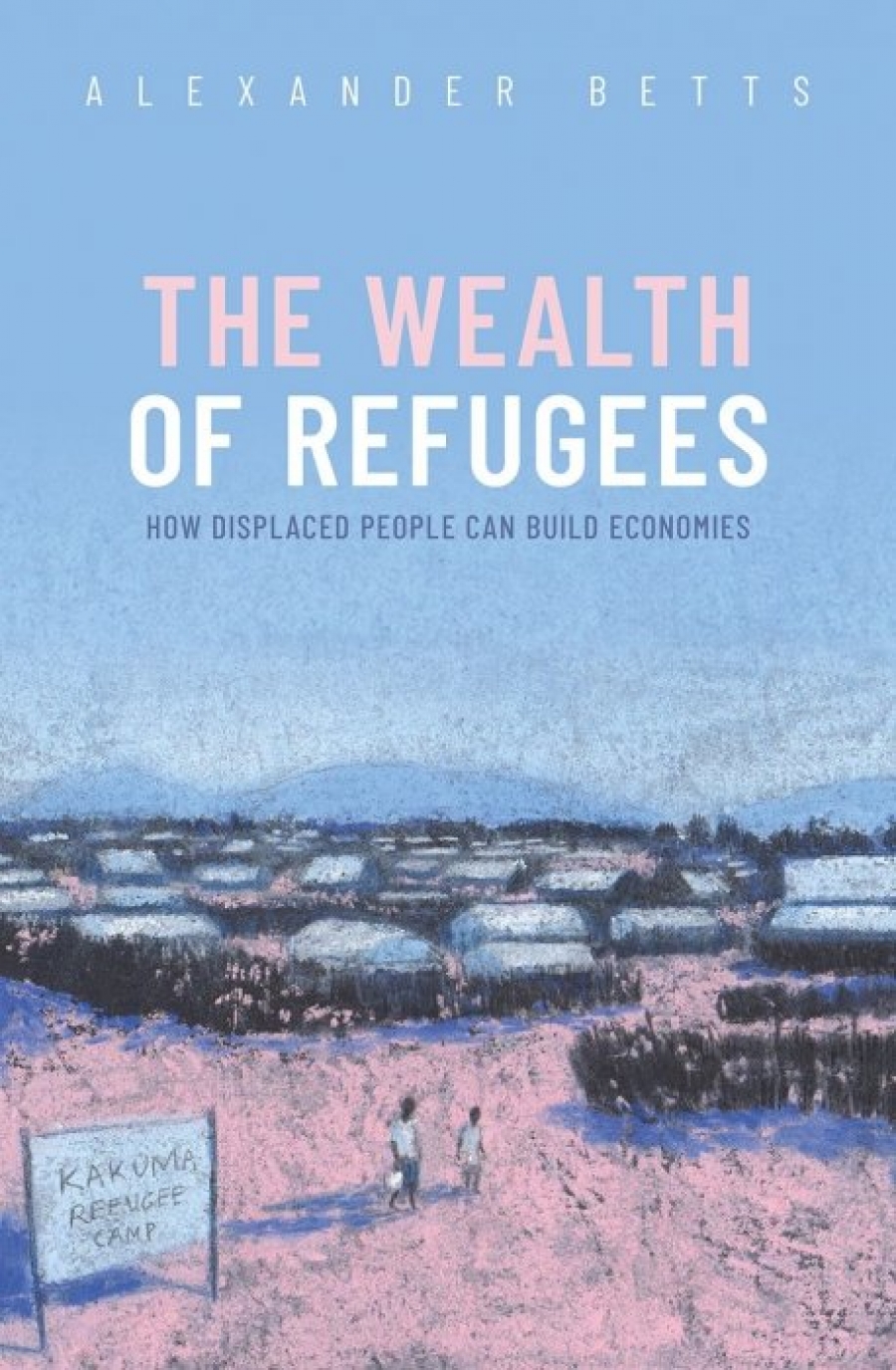 We live in an age of displacement. Refugee numbers are increasing due to a proliferation of fragile states, and this problem will be exacerbated by climate change and the impact of COVID-19. And yet, rising populist nationalism has undermined the political willingness of rich countries to accept migrants and asylum seekers. Given these contradictory trends, how can we create sustainable refugee policies that enable displaced people to live in safety and dignity, while operating at scale?
We live in an age of displacement. Refugee numbers are increasing due to a proliferation of fragile states, and this problem will be exacerbated by climate change and the impact of COVID-19. And yet, rising populist nationalism has undermined the political willingness of rich countries to accept migrants and asylum seekers. Given these contradictory trends, how can we create sustainable refugee policies that enable displaced people to live in safety and dignity, while operating at scale?
"The Wealth of Refugees" draws upon a decade of original qualitative and quantitative research to offer practical solutions. Focusing on refugees in camps and cities in Africa, it identifies approaches that can be effective in improving the welfare of refugees, increasing social cohesion between refugees and host communities, and reducing the need for onward migration. The book argues that the key lies in unlocking the potential contributions of refugees themselves. Refugees bring skills, talents, and aspirations and can be a benefit rather than a burden to receiving societies. Realizing this potential relies upon moving beyond a purely humanitarian focus to fully include refugees in host-country economies, build economic opportunities in refugee-hosting regions, and navigate the ambiguous politics of refugee protection. - Publisher's Description
Request this Title
Reluctant Reception: Refugees, Migration, and Governance in the Middle East and North Africa
Norman, Kelsey P. (2021)
 We typically think of refugees and asylum seekers arriving in countries like the United States, Italy or Greece, but in reality, more than 80% of the world’s refugees live in Global South countries. How do states like Egypt, Morocco and Turkey develop policies toward migrants and refugees, and how do migrants and refugees manage in the absence of formal policy and law?
We typically think of refugees and asylum seekers arriving in countries like the United States, Italy or Greece, but in reality, more than 80% of the world’s refugees live in Global South countries. How do states like Egypt, Morocco and Turkey develop policies toward migrants and refugees, and how do migrants and refugees manage in the absence of formal policy and law?
Kelsey P. Norman, fellow for the Middle East and director of the Women’s Rights, Human Rights and Refugees Program, discussed her new book, “Reluctant Reception: Refugees, Migration and Governance in the Middle East and North Africa,” published by Cambridge University Press in November 2020. She was joined by Abdoul Raouf Ousmane, a program associate with the Immigrant Health Access Project at the University of North Carolina and a former refugee who lived in Cairo, Egypt, for more than a decade while he sought refugee resettlement. - Publisher's Description
Request this Title
The Psychiatric Evaluation and Treatment of Refugees
Kinzie, J. David.; Keepers, George A. (2020)
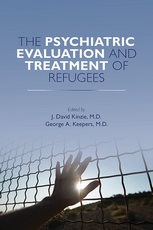 "The Psychiatric Evaluation and Treatment of Refugees" is designed to provide mental health clinicians with the foundational knowledge and skills they need to diagnose and treat refugees, who are disproportionately likely to suffer from post-traumatic stress disorder and psychosis in the short term and depression and anxiety in the long term. According to a report by the United Nations, as of 2018, there were 22 million refugees, forcibly displaced and unable to return to their country of origin based on their well-founded fear of persecution due to race, religion, nationality, political opinions, or membership in a specific social group. Refugees in the United States tend to share common characteristics, including the experience of forced migration from their homeland; multiple episodes of abusive and traumatic treatment prior to, during, and postmigration (including death of family members, torture, starvation, and prolonged periods living in unsafe refugee camps); and the bureaucratic nightmare of obtaining housing, medical care, and so forth. Providing these patients with mental healthcare can be both grueling and challenging, and this guide--written by experts in intercultural psychiatry--offers support and counsel to help clinicians understand and provide care to their patients, while caring for themselves and avoiding burnout.
"The Psychiatric Evaluation and Treatment of Refugees" is designed to provide mental health clinicians with the foundational knowledge and skills they need to diagnose and treat refugees, who are disproportionately likely to suffer from post-traumatic stress disorder and psychosis in the short term and depression and anxiety in the long term. According to a report by the United Nations, as of 2018, there were 22 million refugees, forcibly displaced and unable to return to their country of origin based on their well-founded fear of persecution due to race, religion, nationality, political opinions, or membership in a specific social group. Refugees in the United States tend to share common characteristics, including the experience of forced migration from their homeland; multiple episodes of abusive and traumatic treatment prior to, during, and postmigration (including death of family members, torture, starvation, and prolonged periods living in unsafe refugee camps); and the bureaucratic nightmare of obtaining housing, medical care, and so forth. Providing these patients with mental healthcare can be both grueling and challenging, and this guide--written by experts in intercultural psychiatry--offers support and counsel to help clinicians understand and provide care to their patients, while caring for themselves and avoiding burnout.
The book's content is compelling and timely: - Absolutely indispensable is the chapter on children and adolescents, who have borne the brunt of recent policy changes mandating family separation. The complex issue of acculturative stress for immigrant, refugee, and asylum-seeking children, youth, and families in the face of negative stereotyping and economic and educational disadvantage is addressed, as is mitigating the risk of long-term developmental trauma.- The Oregon Model, developed and launched by the editors and explained in depth in the book, is a research-grounded, team-based treatment model that accommodates the language of refugees, shows respect for their cultural traditions and behaviors, understands the traumas and tragedies of their life experience, and above all demonstrates empathy. - Psychiatric assessment and both biological and psychological treatment of individuals and families are covered in several chapters, which include techniques involved in adapting individual, group, and family psychotherapy. Each chapter includes clinical case examples to effectively illustrate diverse issues in assessment and treatment. The psychiatric assessment and treatment of traumatized refugees raises a wide range of ethical issues, which are examined in a thoughtful and nuanced chapter, in which the author points out that the nature of the refugee experience invariably results in a blurring between the considerations of clinical ethics, which focuses primarily on the doctor-patient relationship, and the broader human rights domain which extends to the relationship of the individual and group to the state.
"The Psychiatric Evaluation and Treatment of Refugees" will help mental healthcare providers deliver culturally and psychologically sensitive care to patients and clients grappling with past and present trauma and the trials of adjustment in a landscape that can be ethically challenging and emotionally overwhelming. - Publisher's Description
Request this Title
After Saigon's Fall: Refugees and US-Vietnamese Relations, 1975-2000
Demmer, Amanda C. (2021)
 Few historians of the Vietnam War have covered the post-1975 era or engaged comprehensively with refugee politics, humanitarianism, and human rights as defining issues of the period. After Saigon's Fall is the first major work to uncover this history. Amanda C. Demmer offers a new account of the post-War normalization of US–Vietnam relations by centering three major transformations of the late twentieth century: the reassertion of the US Congress in American foreign policy; the Indochinese diaspora and changing domestic and international refugee norms; and the intertwining of humanitarianism and the human rights movement. By tracing these domestic, regional, and global phenomena, "After Saigon's Fall" captures the contingencies and contradictions inherent in US-Vietnamese normalization. Using previously untapped archives to recover a riveting narrative with both policymakers and nonstate advocates at its center, Demmer's book also reveals much about US politics and society in the last quarter of the twentieth century. - Publisher's Description
Few historians of the Vietnam War have covered the post-1975 era or engaged comprehensively with refugee politics, humanitarianism, and human rights as defining issues of the period. After Saigon's Fall is the first major work to uncover this history. Amanda C. Demmer offers a new account of the post-War normalization of US–Vietnam relations by centering three major transformations of the late twentieth century: the reassertion of the US Congress in American foreign policy; the Indochinese diaspora and changing domestic and international refugee norms; and the intertwining of humanitarianism and the human rights movement. By tracing these domestic, regional, and global phenomena, "After Saigon's Fall" captures the contingencies and contradictions inherent in US-Vietnamese normalization. Using previously untapped archives to recover a riveting narrative with both policymakers and nonstate advocates at its center, Demmer's book also reveals much about US politics and society in the last quarter of the twentieth century. - Publisher's Description
Request this Title
Displacement: Global Conversations on Refuge
Pasquetti, Silvia; Sanyal, Romola (2021)
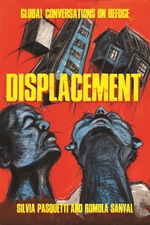 As an unprecedented number of people are displaced around the world, scholars continue to strive to make sense of what appear to be a series of constantly unfolding ‘crises.’
As an unprecedented number of people are displaced around the world, scholars continue to strive to make sense of what appear to be a series of constantly unfolding ‘crises.’
Drawing on research in a range of regions – from Latin America, to Europe, sub-Saharan Africa, North America, post-Soviet regions, and South and South-East Asia – "Displacement" offers an interdisciplinary and transnational approach to thinking about structures, spaces, and lived experiences of displacement. The contributors engage in a historical, transnational, interdisciplinary dialogue to offer different ways of theorizing about refugees, internally displaced persons, stateless people and others that have been forcibly displaced.
Representing a collective effort by sociologists, geographers, anthropologists, political scientists, historians and migration studies scholars, this volume develops new cross-regional conversations and theoretically innovative vocabularies in the work on forced displacement. It also draws forced displacement together with other contemporary issues across different disciplines such as urbanisation, race, and imperialism. - Publisher's Description
Request this Title
America’s Arab Refugees: Vulnerability and Health on the Margins
Inhorn, Marcia C. (2018)
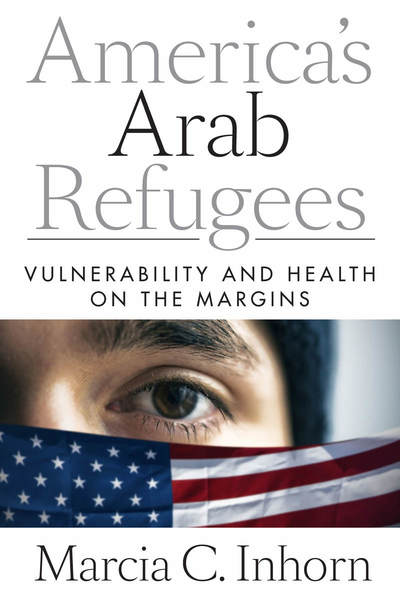 "America's Arab Refugees" is a timely examination of the world's worst refugee crisis since World War II. Tracing the history of Middle Eastern wars—especially the U.S. military interventions in Iraq and Afghanistan—to the current refugee crisis, Marcia C. Inhorn examines how refugees fare once resettled in America.
"America's Arab Refugees" is a timely examination of the world's worst refugee crisis since World War II. Tracing the history of Middle Eastern wars—especially the U.S. military interventions in Iraq and Afghanistan—to the current refugee crisis, Marcia C. Inhorn examines how refugees fare once resettled in America.
In the U.S., Arabs are challenged by discrimination, poverty, and various forms of vulnerability. Inhorn shines a spotlight on the plight of resettled Arab refugees in the ethnic enclave community of "Arab Detroit," Michigan. Sharing in the poverty of Detroit's Black communities, Arab refugees struggle to find employment and to rebuild their lives. Iraqi and Lebanese refugees who have fled from war zones also face several serious health challenges. Uncovering the depths of these challenges, Inhorn's ethnography follows refugees in Detroit suffering reproductive health problems requiring in vitro fertilization (IVF). Without money to afford costly IVF services, Arab refugee couples are caught in a state of "reproductive exile"—unable to return to war-torn countries with shattered healthcare systems, but unable to access affordable IVF services in America. "America's Arab Refugees" questions America's responsibility for, and commitment to, Arab refugees, mounting a powerful call to end the violence in the Middle East, assist war orphans and uprooted families, take better care of Arab refugees in this country, and provide them with equitable and affordable healthcare services. - Publisher's Description
Request this Title
Refuge in a Moving World: Tracing Refugee and Migrant Journeys Across Disciplines
Fiddian-Qasmiyeh, Elena (2020)
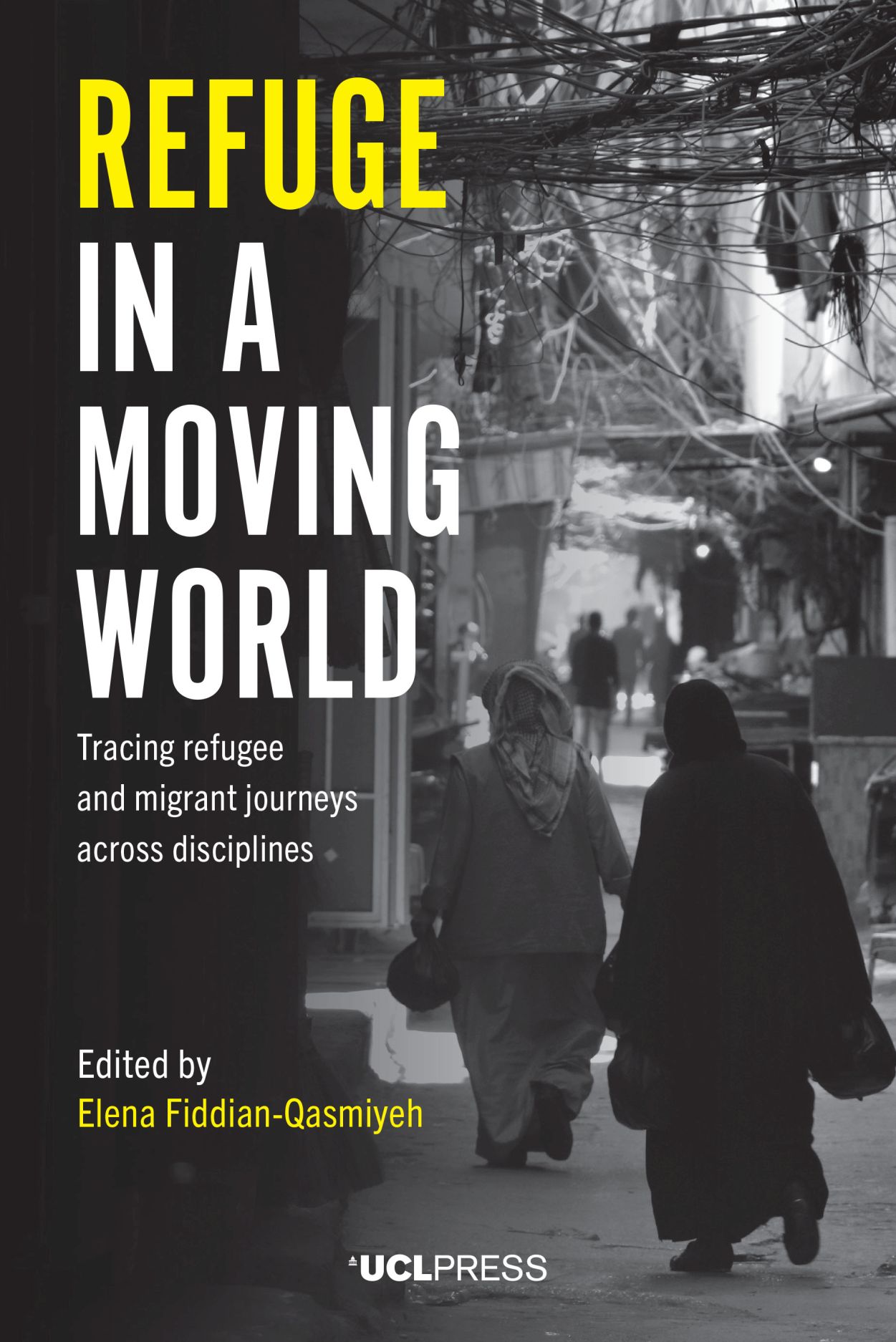 The journeys and experiences of refugees and migrants are deeply complex and highly varied. It takes critical reflections from a diverse range of fields and angles to communicate the nuanced tangles of power structures and inequalities on local, national, and international levels. Bringing together over thirty contributions, "Refuge in a Moving World" discusses migration and displacement from a kaleidoscopic collection of voices.
The journeys and experiences of refugees and migrants are deeply complex and highly varied. It takes critical reflections from a diverse range of fields and angles to communicate the nuanced tangles of power structures and inequalities on local, national, and international levels. Bringing together over thirty contributions, "Refuge in a Moving World" discusses migration and displacement from a kaleidoscopic collection of voices.
Through interdisciplinary lenses, the contributors explore the ways that different people experience and respond to their own situations and to those of other people. "Refuge in a Moving World" combines vital reflections on the intricacies of conceptualizing experiences of forced migration and how people inhabit and negotiate everyday life. Ultimately, "Refuge in a Moving World" argues that working collaboratively to share experiences of migration and displacement fosters more sustainable responses to our moving world. - Publisher's Description
Request this Title
Climate Change, Disasters, and the Refugee Convention
Scott, Matthew (2020)
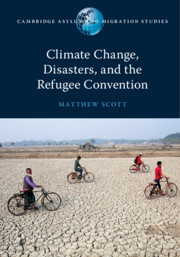 "Climate Change, Disasters and the Refugee Convention" is concerned with refugee status determination (RSD) in the context of disasters and climate change. It demonstrates that the legal predicament of people who seek refugee status in this connection has been inconsistently addressed by judicial bodies in leading refugee law jurisdictions, and identifies epistemological as well as doctrinal impediments to a clear and principled application of international refugee law.
"Climate Change, Disasters and the Refugee Convention" is concerned with refugee status determination (RSD) in the context of disasters and climate change. It demonstrates that the legal predicament of people who seek refugee status in this connection has been inconsistently addressed by judicial bodies in leading refugee law jurisdictions, and identifies epistemological as well as doctrinal impediments to a clear and principled application of international refugee law.
Arguing that RSD cannot safely be performed without a clear understanding of the relationship between natural hazards and human agency, the book draws insights from disaster anthropology and political ecology that see discrimination as a contributory cause of people's differential exposure and vulnerability to disaster-related harm. This theoretical framework, combined with insights derived from the review of existing doctrinal and judicial approaches, prompts a critical revision of the dominant human rights-based approach to the refugee definition. - Publisher's Description
Request this Title
Race-ing Fargo: Refugees, Citizenship, and the Transformation of Small Cities
Erickson, Jennifer Lynn (2021)
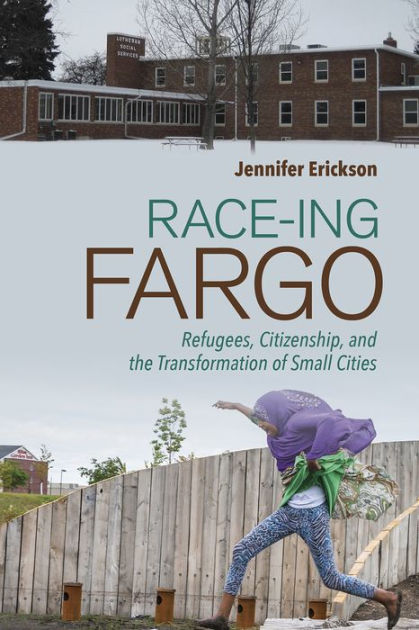 Tracing the history of refugee settlement in Fargo, North Dakota, from the 1980s to the present day, "Race-ing Fargo" focuses on the role that gender, religion, and sociality play in everyday interactions between refugees from South Sudan and Bosnia-Herzegovina and the dominant white Euro-American population of the city. Jennifer Erickson outlines the ways in which refugees have impacted this small city over the last thirty years, showing how culture, political economy, and institutional transformations collectively contribute to the racialization of white cities like Fargo in ways that complicate their demographics.
Tracing the history of refugee settlement in Fargo, North Dakota, from the 1980s to the present day, "Race-ing Fargo" focuses on the role that gender, religion, and sociality play in everyday interactions between refugees from South Sudan and Bosnia-Herzegovina and the dominant white Euro-American population of the city. Jennifer Erickson outlines the ways in which refugees have impacted this small city over the last thirty years, showing how culture, political economy, and institutional transformations collectively contribute to the racialization of white cities like Fargo in ways that complicate their demographics.
"Race-ing Fargo" shows that race, religion, and decorum prove to be powerful forces determining worthiness and belonging in the city and draws attention to the different roles that state and private sectors played in shaping ideas about race and citizenship on a local level. Through the comparative study of white secular Muslim Bosnians and Black Christian Southern Sudanese, Race-ing Fargo demonstrates how cross-cultural and transnational understandings of race, ethnicity, class, and religion shape daily citizenship practices and belonging. - Publisher's Description
Request this Title
No Refuge: Ethics and the Global Refugee Crisis
Parekh, Serena (2020)
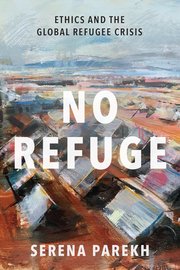 Syrians crossing the Mediterranean in ramshackle boats bound for Europe; Sudanese refugees, their belongings on their backs, fleeing overland into neighboring countries; children separated from their parents at the US/Mexico border--these are the images that the Global Refugee Crisis conjures to many. In the news we often see photos of people in transit, suffering untold deprivations in desperate bids to escape their countries and find safety. But behind these images, there is a second crisis--a crisis of arrival. Refugees in the 21st century have only three real options--urban slums, squalid refugee camps, or dangerous journeys to seek asylum--and none provide genuine refuge.
Syrians crossing the Mediterranean in ramshackle boats bound for Europe; Sudanese refugees, their belongings on their backs, fleeing overland into neighboring countries; children separated from their parents at the US/Mexico border--these are the images that the Global Refugee Crisis conjures to many. In the news we often see photos of people in transit, suffering untold deprivations in desperate bids to escape their countries and find safety. But behind these images, there is a second crisis--a crisis of arrival. Refugees in the 21st century have only three real options--urban slums, squalid refugee camps, or dangerous journeys to seek asylum--and none provide genuine refuge.
In "No Refuge," political philosopher Serena Parekh calls this the second refugee crisis: the crisis of the millions of people who, having fled their homes, are stuck for decades in the dehumanizing and hopeless limbo of refugees camps and informal urban spaces, most of which are in the Global South. Ninety-nine percent of these refugees are never resettled in other countries. Their suffering only begins when they leave their war-torn homes. As Parekh urgently argues by drawing from numerous first-person accounts, conditions in many refugee camps and urban slums are so bleak that to make people live in them for prolonged periods of time is to deny them human dignity. It's no wonder that refugees increasingly risk their lives to seek asylum directly in the West.
Drawing from extensive first-hand accounts of life as a refugee with nowhere to go, Parekh argues that we need a moral response to these crises--one that assumes the humanity of refugees in addition to the challenges that states have when they accept refugees. Only once we grasp that the global refugee crisis has these two dimensions--the asylum crisis for Western states and the crisis for refugees who cannot find refuge--can we reckon with a response proportionate to the complexities we face. Countries and citizens have a moral obligation to address the structures that unjustly prevent refugees from accessing the minimum conditions of human dignity. As Parekh shows, there are ways we as citizens can respond to the global refugee crisis, and indeed we are morally obligated to do so. - Publisher's Description
Request this Title
Human Flow: Stories from the Global Refugee Crisis
Ai, Weiwei, interviewer.; Cheshirkov, Boris, editor.; Heath, Ryan, 1980- editor.; Yap, Chin-Chin, editor (2020)
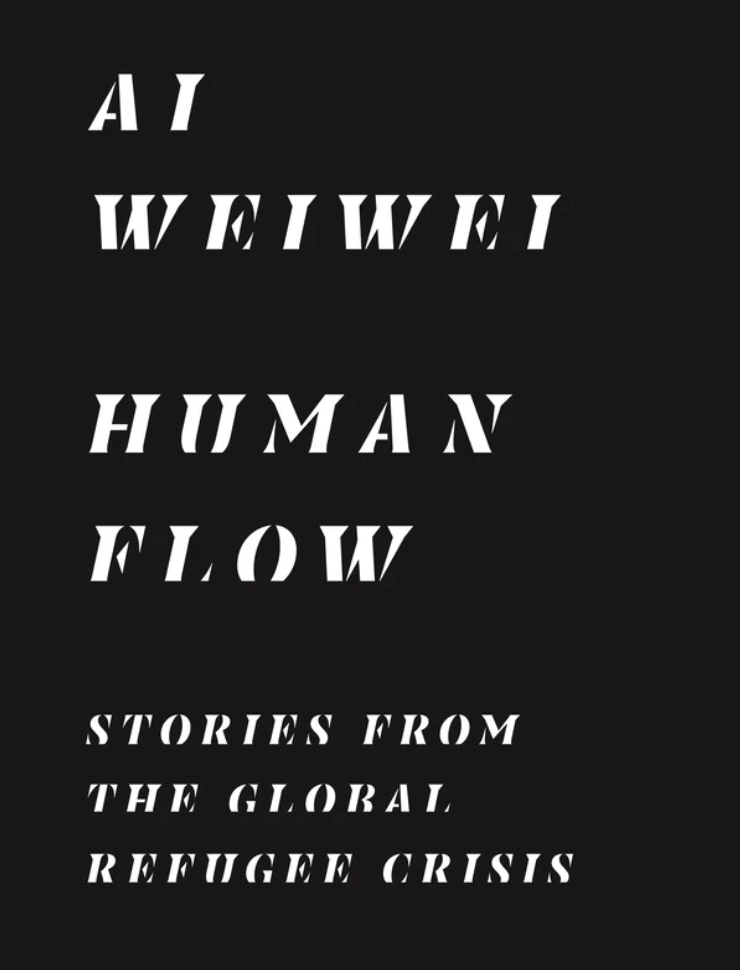 In the course of making "Human Flow," his epic feature documentary about the global refugee crisis, the artist Ai Weiwei and his collaborators interviewed more than 600 refugees, aid workers, politicians, activists, doctors, and local authorities in twenty-three countries around the world. A handful of those interviews were included in the film. This book presents one hundred of these conversations in their entirety, providing compelling first-person stories of the lives of those affected by the crisis and those on the front lines of working to address its immense challenges.
In the course of making "Human Flow," his epic feature documentary about the global refugee crisis, the artist Ai Weiwei and his collaborators interviewed more than 600 refugees, aid workers, politicians, activists, doctors, and local authorities in twenty-three countries around the world. A handful of those interviews were included in the film. This book presents one hundred of these conversations in their entirety, providing compelling first-person stories of the lives of those affected by the crisis and those on the front lines of working to address its immense challenges.
Speaking in their own words, refugees give voice to their experiences of migrating across borders, living in refugee camps, and struggling to rebuild their lives in unfamiliar and uncertain surroundings. They talk about the dire circumstances that drove them to migrate, whether war, famine, or persecution; and their hopes and fears for the future. A wide range of related voices provides context for the historical evolution of this crisis, the challenges for regions and states, and the options for moving forward.
Complete with photographs taken by Ai Weiwei while filming "Human Flow," this book provides a powerful, personal, and moving account of the most urgent humanitarian crisis of our time. - Publisher's Description
Request this Title
Borders As Infrastructure: The Technopolitics of Border Control
Dijstelbloem, Huub (2021)
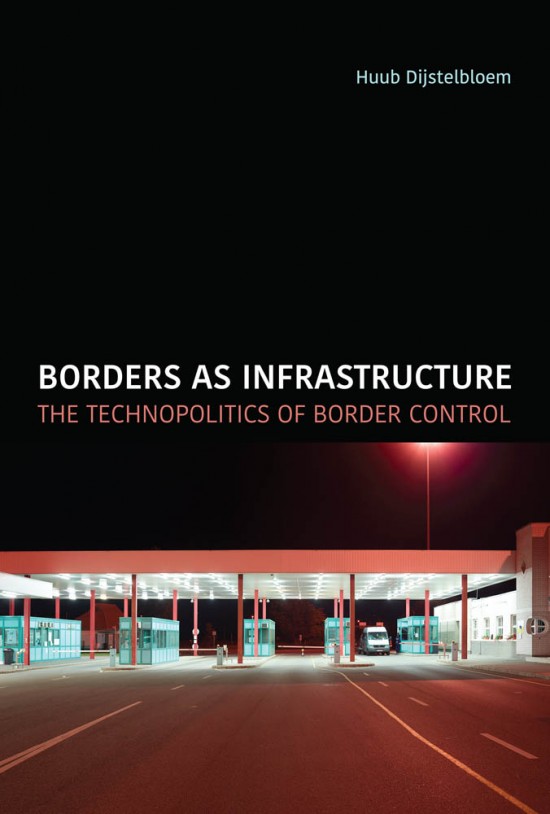 In "Borders as Infrastructure," Huub Dijstelbloem brings science and technology studies, as well as the philosophy of technology, to the study of borders and international human mobility. Taking Europe's borders as a point of departure, he shows how borders can transform and multiply and and how they can mark conflicts over international orders. Borders themselves are moving entities, he claims, and with them travel our notions of territory, authority, sovereignty, and jurisdiction. The philosophies of Bruno Latour and Peter Sloterdijk provide a framework for Dijstelbloem's discussion of the material and morphological nature of borders and border politics.
In "Borders as Infrastructure," Huub Dijstelbloem brings science and technology studies, as well as the philosophy of technology, to the study of borders and international human mobility. Taking Europe's borders as a point of departure, he shows how borders can transform and multiply and and how they can mark conflicts over international orders. Borders themselves are moving entities, he claims, and with them travel our notions of territory, authority, sovereignty, and jurisdiction. The philosophies of Bruno Latour and Peter Sloterdijk provide a framework for Dijstelbloem's discussion of the material and morphological nature of borders and border politics.
Dijstelbloem offers detailed empirical investigations that focus on the so-called migrant crisis of 2014-2016 on the Greek Aegean Islands of Chios and Lesbos; the Europe surveillance system Eurosur; border patrols at sea; the rise of hotspots and "humanitarian borders"; the technopolitics of border control at Schiphol International Airport; and the countersurveillance by NGOs, activists, and artists who investigate infrastructural border violence. Throughout, Dijstelbloem explores technologies used in border control, including cameras, databases, fingerprinting, visual representations, fences, walls, and monitoring instruments. Borders can turn places, routes, and territories into "zones of death." Dijstelbloem concludes that Europe's current relationship with borders renders borders--and Europe itself--an "extreme infrastructure" obsessed with boundaries and limits. - Publisher's Description
Request this Title
Incarcerated Stories: Indigenous Women Migrants and Violence in the Settler-Capitalist State
Speed, Shannon (2019)
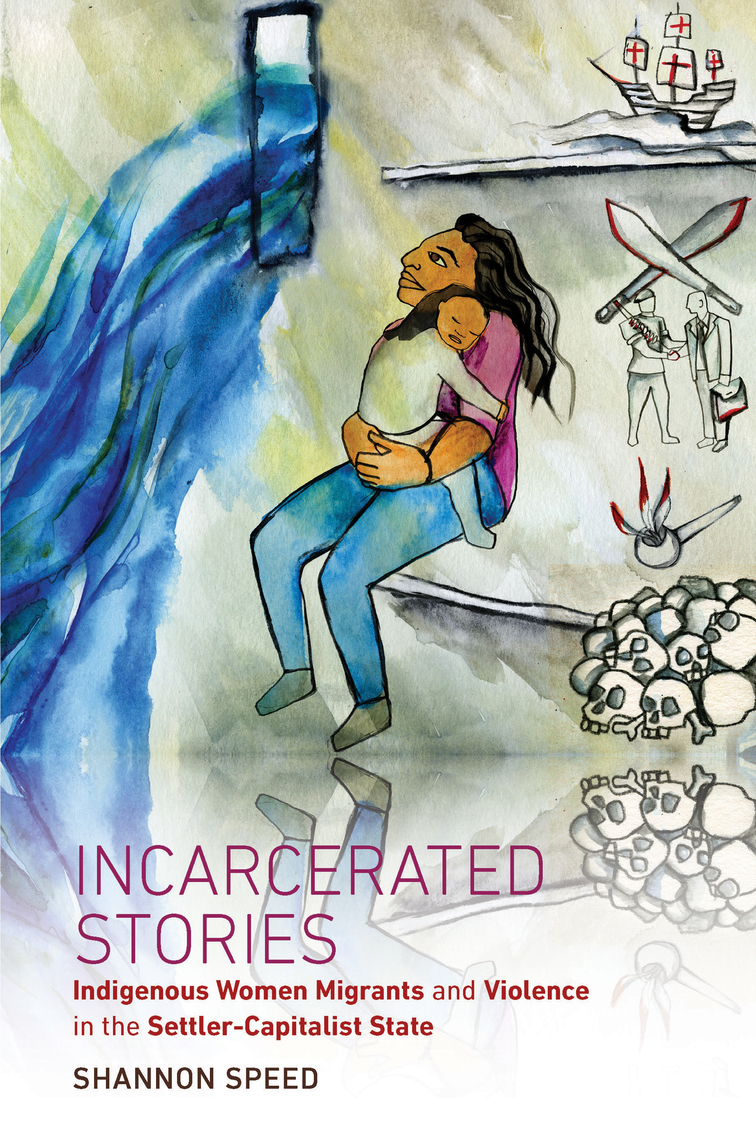 Indigenous women migrants from Central America and Mexico face harrowing experiences of violence before, during, and after their migration to the United States, like all asylum seekers. But as Shannon Speed argues, the circumstances for Indigenous women are especially devastating, given their disproportionate vulnerability to neoliberal economic and political policies and practices in Latin America and the United States, including policing, detention, and human trafficking. Speed dubs this vulnerability "neoliberal multicriminalism" and identifies its relation to settler structures of Indigenous dispossession and elimination. Using innovative ethnographic practices to record and recount stories from Indigenous women in U.S. detention, Speed demonstrates that these women's vulnerability to individual and state violence is not rooted in a failure to exercise agency. Rather, it is a structural condition, created and reinforced by settler colonialism, which consistently deploys racial and gender ideologies to manage the ongoing business of occupation and capitalist exploitation.
Indigenous women migrants from Central America and Mexico face harrowing experiences of violence before, during, and after their migration to the United States, like all asylum seekers. But as Shannon Speed argues, the circumstances for Indigenous women are especially devastating, given their disproportionate vulnerability to neoliberal economic and political policies and practices in Latin America and the United States, including policing, detention, and human trafficking. Speed dubs this vulnerability "neoliberal multicriminalism" and identifies its relation to settler structures of Indigenous dispossession and elimination. Using innovative ethnographic practices to record and recount stories from Indigenous women in U.S. detention, Speed demonstrates that these women's vulnerability to individual and state violence is not rooted in a failure to exercise agency. Rather, it is a structural condition, created and reinforced by settler colonialism, which consistently deploys racial and gender ideologies to manage the ongoing business of occupation and capitalist exploitation.
With sensitive narration and sophisticated analysis, this book reveals the human consequences of state policy and practices throughout the Americas and adds vital new context for understanding the circumstances of migrants seeking asylum in the United States. - Publisher's Description
Request this Title
Forever Prisoners: How the United States Made the World's Largest Immigration Detention System
Young, Elliott (2021)
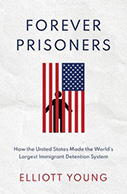 Elliot Young’s new book, "Forever Prisoners: How the United States Made the World’s Largest Immigration Detention System," presents a new approach to a daunting topic. To tell the history of U.S. immigration detention is indeed difficult because, as Young identifies, it is hard to say which types of detentions “count” as immigration detentions. Did the Border Control’s temporary camps for Mexicans in the Southwest during “Operation Wetback” count as immigration detentions? What about detentions in insane asylums of foreign nationals deemed mentally ill? Or forced relocation camps for “enemy aliens” who were captured abroad? Indeed, as Young notes, the history of U.S. immigration detention also can include the enslavement of Native Americans and Africans on plantations and farms, which were “essentially prison work camps.” He defines immigration detention broadly, and in doing so debunks the myth that the United States, with its symbolic shuttering of the Ellis Island detention facility in 1954, ushered in a new policy that disfavored immigration detention. He presents a counter-narrative, focusing on the many ways in which the U.S. government has caged foreigners throughout its history.
Elliot Young’s new book, "Forever Prisoners: How the United States Made the World’s Largest Immigration Detention System," presents a new approach to a daunting topic. To tell the history of U.S. immigration detention is indeed difficult because, as Young identifies, it is hard to say which types of detentions “count” as immigration detentions. Did the Border Control’s temporary camps for Mexicans in the Southwest during “Operation Wetback” count as immigration detentions? What about detentions in insane asylums of foreign nationals deemed mentally ill? Or forced relocation camps for “enemy aliens” who were captured abroad? Indeed, as Young notes, the history of U.S. immigration detention also can include the enslavement of Native Americans and Africans on plantations and farms, which were “essentially prison work camps.” He defines immigration detention broadly, and in doing so debunks the myth that the United States, with its symbolic shuttering of the Ellis Island detention facility in 1954, ushered in a new policy that disfavored immigration detention. He presents a counter-narrative, focusing on the many ways in which the U.S. government has caged foreigners throughout its history.
Young tells the history of U.S. immigration detention through narrative tales of people caught in the immigration detention dragnet throughout the history of the modern deportation system. He begins in the late 1800s, a period that saw expansive federal regulation of immigration, especially in efforts to exclude and deport Chinese nationals. Here he recounts the detentions of Chinese on McNeil Island prison, off the coast of Washington territory. He ends by detailing the detentions and deportations of one Salvadoran woman, a saga that began with a traffic stop in 2015 and spanned five years. Along the way, he tells the story of the World War I-era detentions of a stateless man declared insane, the detentions of Japanese Peruvians captured abroad and deemed “enemy aliens” during World War II, and the indefinite detentions of Mariel Cubans in the 1980s. By weaving together these narratives with facts and figures about various U.S. immigration detention policies, Young leaves the reader with little doubt that the U.S. detention system is enormous in size, and has negatively impacted millions of foreign nationals and their communities. He also successfully demonstrates how the U.S. immigration detention system is incredibly good at shape-shifting, taking on new forms, all the while maintaining its core feature of walling off those deemed “aliens” from the rest of the U.S. population.
In order to try to cover such a broad subject as the history of immigration detention, it is natural that there will be topics that are left out. The missing topic that I wish Young had taken up is e-carceration, commonly known as electronic monitoring. This is the immigration detention system’s newest form of shape-shifting, where foreigners are walled off by virtual, not physical, walls. Yet, it imposes pain, shame, arbitrary rules, and limited freedom of movement, just as do physical walls. Empirical studies from the criminal justice system have shown that many people experience electronic monitoring as more punitive than physical incarceration. As Michelle Alexander has noted, electronic monitoring is to prison as Jim Crow laws are to slavery: at first glance, preferable, yet in practice, just as terrible. An inclusion of electronic monitoring would complete the “long and twisted chain” that Young describes — what started with slavery continues to this day, in the various permutations of immigration detention. - Publisher's Description
Request this Title
The Last Million: Europe's Displaced Persons from World War to Cold War
Nasaw, David (2020)
 In May 1945, German forces surrendered to the Allied powers, putting an end to World War II in Europe. But the aftershocks of global military conflict did not cease with the German capitulation. Millions of lost and homeless concentration camp survivors, POWs, slave laborers, political prisoners, and Nazi collaborators in flight from the Red Army overwhelmed Germany, a nation in ruins. British and American soldiers gathered the malnourished and desperate refugees and attempted to repatriate them. But after exhaustive efforts, there remained more than a million displaced persons left behind in Germany: Jews, Poles, Estonians, Latvians, Lithuanians, Ukrainians, and other Eastern Europeans who refused to go home or had no homes to return to. The Last Million would spend the next three to five years in displaced persons camps, temporary homelands in exile divided by nationality, with their own police forces, churches and synagogues, schools, newspapers, theaters, and infirmaries.
In May 1945, German forces surrendered to the Allied powers, putting an end to World War II in Europe. But the aftershocks of global military conflict did not cease with the German capitulation. Millions of lost and homeless concentration camp survivors, POWs, slave laborers, political prisoners, and Nazi collaborators in flight from the Red Army overwhelmed Germany, a nation in ruins. British and American soldiers gathered the malnourished and desperate refugees and attempted to repatriate them. But after exhaustive efforts, there remained more than a million displaced persons left behind in Germany: Jews, Poles, Estonians, Latvians, Lithuanians, Ukrainians, and other Eastern Europeans who refused to go home or had no homes to return to. The Last Million would spend the next three to five years in displaced persons camps, temporary homelands in exile divided by nationality, with their own police forces, churches and synagogues, schools, newspapers, theaters, and infirmaries.
The international community could not agree on the fate of the Last Million, and after a year of debate and inaction, the International Refugee Organization was created to resettle them in lands suffering from postwar labor shortages. But no nations were willing to accept the 200,000 to 250,000 Jewish men, women, and children who remained trapped in Germany. In 1948, the United States, among the last countries to accept refugees for resettlement, finally passed a displaced persons bill. With Cold War fears supplanting memories of World War II atrocities, the bill granted the vast majority of visas to those who were reliably anti-Communist, including thousands of former Nazi collaborators and war criminals, while severely limiting the entry of Jews, who were suspected of being Communist sympathizers or agents because they had been recent residents of Soviet-dominated Poland. Only after the controversial partition of Palestine and Israel's declaration of independence were the remaining Jewish survivors able to leave their displaced persons camps in Germany.
A masterwork from acclaimed historian David Nasaw, "The Last Million" tells the gripping yet until now largely hidden story of postwar displacement and statelessness. By 1952, the Last Million were scattered around the world. As they crossed from their broken past into an unknowable future, they carried with them their wounds, their fears, their hope, and their secrets. Here for the first time, Nasaw illuminates their incredible history and, with profound contemporary resonance, shows us that it is our history as well. - Publisher's Description
Request this Title
Operation Pedro Pan and the Exodus of Cuba's Children
Shnookal, Deborah (2021)
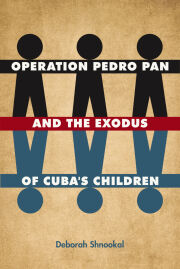 This in-depth examination of one of the most controversial episodes in U.S.-Cuba relations sheds new light on the program that airlifted 14,000 unaccompanied children to the United States in the wake of the Cuban Revolution. "Operation Pedro Pan" is often remembered within the U.S. as an urgent “rescue” mission, but Deborah Shnookal points out that a multitude of complex factors drove the exodus, including Cold War propaganda and the Catholic Church’s opposition to the island’s new government.
This in-depth examination of one of the most controversial episodes in U.S.-Cuba relations sheds new light on the program that airlifted 14,000 unaccompanied children to the United States in the wake of the Cuban Revolution. "Operation Pedro Pan" is often remembered within the U.S. as an urgent “rescue” mission, but Deborah Shnookal points out that a multitude of complex factors drove the exodus, including Cold War propaganda and the Catholic Church’s opposition to the island’s new government.
Shnookal illustrates how and why Cold War scare tactics were so effective in setting the airlift in motion, focusing on their context: the rapid and profound social changes unleashed by the 1959 Revolution, including the mobilization of 100,000 Cuban teenagers in the 1961 national literacy campaign. Other reforms made by the revolutionary government affected women, education, religious schools, and relations within the family and between the races. Shnookal exposes how, in its effort to undermine support for the revolution, the U.S. government manipulated the aspirations and insecurities of more affluent Cubans. She traces the parallel stories of the young “Pedro Pans” separated from their families—in some cases indefinitely—in what is often regarded in Cuba as a mass “kidnapping” and the children who stayed and joined the literacy brigades. These divergent journeys reveal many underlying issues in the historically fraught relationship between the U.S. and Cuba and much about the profound social revolution that took place on the island after 1959.
Publication of the paperback edition made possible by a Sustaining the Humanities through the American Rescue Plan grant from the National Endowment for the Humanities. - Publisher's Description
Request this Title
